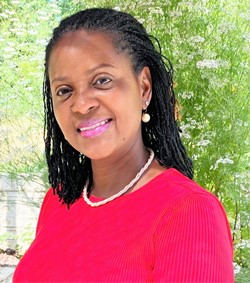What it Says About You!
Converting to Online Teaching
A series of short guidance articles for educators and institutions
SERIES ARTICLE
By John H. Cable, MArch, R.A., PMP
Director, Project Management Center for Excellence
and
Shana Webster-Trotman, PhD, PMP, ITIL
Adjunct Professor, Project Management Center for Excellence
A. James Clark School of Engineering
University of Maryland, USA
College Park, Maryland, USA
Since spring of 2020, I (John) have written several articles providing guidance to our faculty that had never taught an online course. I discussed different topics all related to teaching in a virtual environment; Blended Learning Classroom Guidance, Video Production Guidance, and Facilitating Virtual Classes to name a few. In a recent video class that I observed, it stuck me that everyone needs to understand that “You Can Not; Not Communicate.” In the article on Facilitating Virtual Classes, we briefly discussed having a good webcam, lighting, and microphones. But we really focused the article on conducting the virtual class. This article provides tips and techniques for putting your best image forward in any virtual setting.
A key point to remember is that when you are on a video conference, the visual image you present says a lot. Not only are the webcam, lighting, and audio important but how you dress, your posture, your facial expressions, and your background contribute to creating an overall impression of you. The environment you work in says a lot about you. Make it say what you want it to say!
The Basics: Camera, Lighting, & Audio
The basics that must be right for an effective video conference include having a good webcam, the right lighting, and good sound quality. The cameras that come in laptops do not always have the quality you want. And desktop PC monitors don’t normally come with cameras! You may need to purchase a good webcam. They do not have to be expensive to be good. We use the Logitech C920x which sells for about $75.00. There are many in the series to choose from.
Once you have a good camera, it is very important to get it located so that you are looking directly into the camera when on a video conference. I can’t tell you how many times we see a camera that is not adjusted properly, and the view is looking up or down but not at the face of the other party! Do you really want others looking up your nose or at the top of your head? Proper camera positioning is practically a must!
The next basic to attend to is lighting. It is important to have good lighting in front of your face so that the viewers clearly see your face and expressions. Backlighting puts you in a silhouette and none of your facial features are distinguishable. There are several different lights available to mount on the monitor or small stands to put the light source so that you are not in shadow. The key issue is to be sure it is a full spectrum LED light that you can adjust the brightness. Having warm “natural” light is crucial to not looking like you are ill.
Finally, the last of the three basics is audio quality. The simple fact is that the mics that are built into laptops and PC monitors pick up a lot of background noise and generally do not produce good quality sound, particularly for recording. There are many good mics available. We like the Purple Panda Lavalier microphone but Jabra, Computer Blue Yetti, and many others will meet your audio requirements and make you sound like a pro!
More…
To read entire article, click here
Editor’s note: This series of articles by the Director of the University of Maryland’s Project Management Center for Excellence provides information and advice for converting from traditional in-person classes to online teaching, based on their experience before and during the Covid-19 pandemic of 2020.
How to cite this paper: Cable, J. H. (2021). Converting to Online Teaching: A series of short guidance articles for educators and institutions – Non-verbal Communications in Video Conferencing: What it Says About You!, PM World Journal, Vol. X, Issue VI, June. Available online at https://pmworldlibrary.net/wp-content/uploads/2021/06/pmwj106-Jun2021-Cable-Trotman-non-verbal-communication-in-video-conferencing.pdf
About the Authors

John Cable
Director, Project Management Center for Excellence
University of Maryland, College Park, MD, USA
![]()
John Cable is Director of the Project Management Center for Excellence in the A.James Clark School of Engineering at the University of Maryland, where he is also a professor and teacher of several graduate courses in project management. His program at the University of Maryland offers masters and PhD level programs focused on project management. With more than 1,300 seats filled annually with students from many countries, including more than 40 PhD students, the program is the largest graduate program in project management at a major university in the United States.
John Cable served in the newly formed U.S. Department of Energy in 1980, where he was involved with developing energy standards for buildings, methods for measuring energy consumption, and managing primary research in energy conservation. As an architect and builder, Mr. Cable founded and led John Cable Associates in 1984, a design build firm. In 1999 he was recruited by the University of Maryland’s Department of Civil & Environmental Engineering to create and manage a graduate program in project management. In his role as founder and director of the Project Management Center for Excellence at Maryland, the program has grown to offer an undergraduate minor, master’s degrees, and a doctoral program. Information about the Project Management Center for Project Management at the University of Maryland can be found at www.pm.umd.edu.
In 2002, PMI formed the Global Accreditation Center for Project Management Educational Programs (GAC). Mr. Cable was appointed to that inaugural board where he served as vice chair. In 2006, he was elected as chairman, a role he held through 2012. As Chair of the PMI GAC, John led the accreditation of 86 project management educational programs at 40 institutions in 15 countries in North America, Europe, the Middle East, Latin America and the Asia Pacific Region. John was awarded PMI’s 2012 Distinguished Contribution Award for his leadership at the GAC. He can be contacted at jcable@umd.edu.
To view other works by John Cable, visit his author showcase in the PM World Library at https://pmworldlibrary.net/authors/john-cable/

Shana Webster-Trotman, PhD
Project Management Center for Excellence
University of Maryland, College Park, MD, USA
![]()
Shana Webster-Trotman, PhD, PMP, ITIL, an adjunct professor at the University of Maryland Project Management Center for Excellence participated in writing this article. Shana teaches Communications for Project Managers, a highly popular and required course for UMD’s Project Management minor. Prior to joining the UMD faculty, Shana taught graduate courses in project management, technical writing, communication, strategic management, and leadership at several universities.
In a fulltime capacity with the U. S. Department of Commerce, Shana serves as a management analyst and project manager, where she conducts program evaluations and interdepartmental studies; formulates process improvement recommendations; and manages ad-hoc projects initiated to accomplish strategic goals and objectives. She served as project manager for the 2018 National Trademark Exposition held at the National Museum of American History reaching 43,000 visitors. She received the Department of Commerce Silver Medal Award for designing and implementing successful organizational-wide programs and in 2014, was awarded a Distinguished Career Award. Most recently, she was recognized with a Special Act Award for spearheading the planning of an organizational-wide training program impacting 850 employees.
Shana is a certified Gallup Strengths Coach, EQ-i2.0/360 Coach, DISC Behavioral Analyst, and Myers-Briggs practitioner. She also holds certifications in Lean Six Sigma and Information Technology Infrastructure v3. She is a senior fellow of the Excellence in Government Fellows Program. With a diverse, multidisciplinary academic background, she holds a Ph.D. in Management with a specialization in leadership and organizational change; a master’s degree in Financial Management; a master’s degree in English with a specialization in teaching writing and literature; and a bachelor’s degree in English with significant course work in Communication. She can be contacted at shanawt@umd.edu.










[…] This article appeared in PM World Journal, Vol. X, Issue XI, June 2021. […]